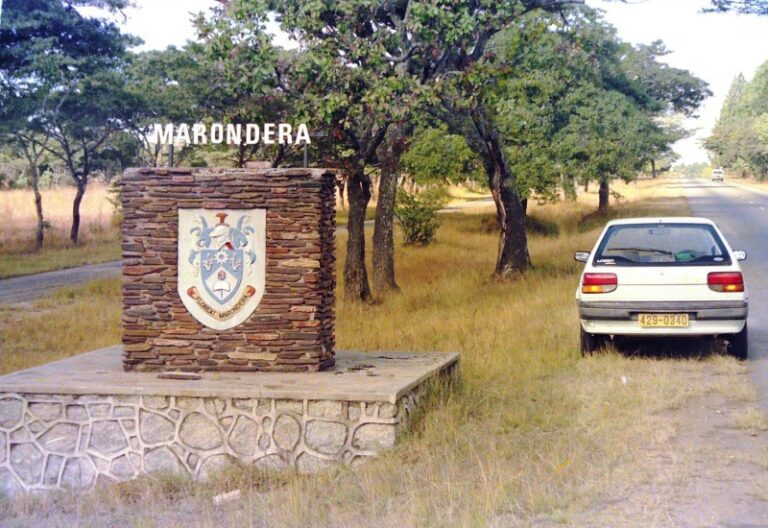
BY FIDELITY MHLANGA
It is fair to say that the death of Zororo Makamba, a 30-year-old radio and television commentator on March 23, two days after testing positive for coronavirus finally spurred government into action.
Makamba was not from the poor townships of Harare, he was born of one of Zimbabwe’s wealthiest families that has connections to the ruling elite and his death was evidence that the dreaded COVID-19 virus had hit the shores of the southern African nation after wreaking havoc across the globe.
On March 31, the Zimbabwe government, unnerved by an upsurge in COVID-19 infections and the trail of death that was surely following, announced its first hard lockdown, which restricted movement and led to the closure of companies.
Almost immediately, the way of life changed for Zimbabweans, with the entire country shut down after the emergence of the ruthless virus, and the economy came to a standstill, a reality that was playing out all over the globe. Millions of working-class people had to sit at home to stay alive.
The last time in living memory that a similar catastrophic outbreak had grounded the global economy had been in 1919/20, when the Spanish influenza outbreak rippled across the world.
The coincidence that COVID-19 hit humans exactly 100 years later is not entirely surprising, but back in 1920, humanity felt the full impact of the ruthless outbreak that killed 50 million people in about one year because responsive measures were weak compared to the present-day.
For businesses, the shutdown and its attendant upheavals meant less trade, less consumer uptake for almost everything and a slowdown in revenues.
- Chamisa under fire over US$120K donation
- Mavhunga puts DeMbare into Chibuku quarterfinals
- Pension funds bet on Cabora Bassa oilfields
- Councils defy govt fire tender directive
Keep Reading
The general feeling was that of an industrial bloodbath.
But a glance at the 2020 financial results so far released by listed companies showed most of them defied the COVID-19 headwinds and remained afloat although volumes plummeted throughout last year before rebounding in January.
It may be difficult to rely on the final data reported by domestic firms because of the hyperinflationary crisis, but some of the advances reported by firms during period still placed them ahead of 2019 figures even if the currency was stable, with the financial services sector being kept afloat by transaction fees, even though at some banks this figure declined.
Financial services giant FBC Holdings reported a profit-after-tax of $1,51 billion, from a loss of $1,62 billion reported in 2019.
Total income was $8,1 billion, which was 14% ahead of the previous year’s comparative amount of $7,2 billion.
“While foreign currency revaluation gains contributed significantly to the group’s reported total income, our lending operations managed to record modest growth, as a result of a combination of loan growth and re-pricing, despite the prevailing macro- economic challenges,” FBC said.
Consequently, net interest income was 20% higher with $1,7 billion being achieved during the period under review, against $1,4 billion recorded in the prior year.
A 5% decline in interest expense was also registered as a result of an improvement in the funding mix. Net fees and commission income receded 12% to $1,2 billion from $1,4 billion recorded in 2019, mainly as a result of a marked slowdown in the volume of transactions, in line with the reduced economic activity.
FBC said its insurance business recorded a decrease of 5% in net earned insurance premium to $845 million from $886 million achieved the previous year.
The significant decrease in insurance premium revenues of 21% was offset by an improvement in premiums ceded to reinsures and retrocessionaires of 44%.
“The COVID-19 pandemic lockdown effects and the hyperinflationary environment had an initial negative effect on the insurance industry at large. This, however, took a positive turn when the regulatory authorities subsequently permitted the underwriting of insurance policies in foreign currency,” FBC said.
As at December 31, 2020, the group’s total assets increased by 19% to $32,4 billion against $27,1 billion as at 31 December 2019.
The growth was mainly driven by an increase in deposits and the translation of foreign denominated assets.
Listed crocodile breeder, Padenga Holdings’ after-tax-profit for 2020, at US$2,86 million, was down from US$6,74 million registered during the same period in 2019.
But the advantage with Padenga was that it remains in black in United States dollars.
The group’s financial results for 2020 was driven by a solid contribution to revenue from its newly acquired mining business, Dallaglio.
Revenue for the group was US$71,3 million up from US$29,1 million in the prior period.
Contribution to turnover from the Texas alligator operation was US$3,9 million being 5% of turnover.
Dallaglio recorded a profit-before-tax of US$71 million during the period under review, while turnover amounted to US$40,3 million.
The business unit benefited from a higher average gold price in 2020 of US$1 518 per ounce, compared to US$1 308 per ounce in 2019.
Pipes manufacturing concern, Proplastics also remained in the black.
“Despite the effects of the lockdown and relocation costs which had a huge impact on overheads, the group posted an inflation-adjusted profit-before-tax of $174 million and a profit-after-tax of $83,58 million after taking into account both current and deferred tax,” said company chairman Greg Sebborn.
Turnover grew by 4% to $1,09 billion and the amount was received in United States dollars after the introduction of Statutory Instrument 85 of 2020 and was recorded at the interbank rate.
“Given the gap between the interbank and the alternative market rates, the reporting does not necessarily reflect the true marketing conditions. Thereafter, the gap between the interbank and market rate continued to widen yet the group had a significant amount of its revenue receipts in United States dollars during the year,” Sebborn said.
Volumes were up 19% from prior year on the back of a strong second half performance.
The statement of financial position remained solid with total assets amounting to $1,7 billion.
The company announced good news that the new factory together with its automated mixing plant was now fully functional with production in full swing in this new state-of-the-art facility.
The new mixing plant, whose commissioning had been delayed as the project engineers from Italy could not travel due to COVID-19 restrictions, was finally commissioned in December 2020 and is running smoothly.
“The commissioning was completed without any challenges. This augurs well for the future as the group is poised to benefit from this new investment with the initial assessment showing that targets set at the onset of the project are being exceeded,” Sebborn said.
On the outlook, the company sees a strong rise in the demand of its products underpinned by infrastructural development, mining and anticipated bumper harvest in agriculture.
Another building material manufacturing entity, Turnall Holdings’ profit-after-tax tumbled to $164, 5 million in 2020 from $444 million in 2019.
Inflation-adjusted revenues were down by 3,8% to $999,5 million despite a 9% increase in sales volumes.
Commenting on Turnall’s performance, advisory firm Morgan&Co said: “The construction sector is anticipating a boom in 2021 on the back of several factors. The sustained international remittances inflow directed towards the residential housing sector is expected to continue driving activity in the real estate subsector. This will be in the purview of many complemented by an expected improvement in disposable incomes in the country. The latest agriculture season is expected to drive the economy’s rebound from the pandemic and we opine that residential housing projects for farmers will increase after their bounty harvests”.
Zimbabwe’s case is peculiar.
Thousands of firms have folded during the last two decades due to the economic crisis.
But it appears those that have remained have built up stronger defences to take on any form of crisis — these are likely to remain standing for much longer.










